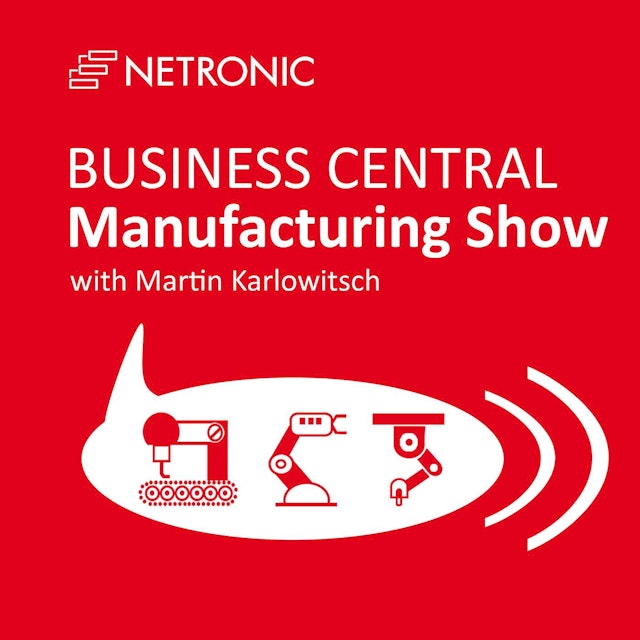Two weeks ago, I met Krzysztof Bialowas from Poland who not only is the Dynamics Business Central Team Leader from the Danish company Dynaway. Krzysztof is also a Microsoft Most Valued Professional (MVP) and the inventor of the famous Dynamics bearings. Before the show, we figured out that we share a passion for football (some people dare call it soccer), but decided to keep that part out of our conversation.
Instead, we did what is expected in the Business Central manufacturing and chatted about, well, Business Central and manufacturing. The conversation quickly became very hands-on and practical. Krzysztof had a lot of real-life experiences to share. Hence, this episode is full of Business Central manufacturing tips and best practices.
From Krzysztof's experience, the ideal approach to implement Dynamics 365 Business Central manufacturing is to start with understanding the production processes. Once (fully) understood, they can get mapped in the ERP system. For him, gaining an understanding of the production processes is so crucial that he highly recommends starting any manufacturing project with a factory visit.
If this isn't possible due to travel regulations, partners and customers should make sure to involve a variety of people in the remote consulting meetings. A Business Central manufacturing project is likely to fail if only the management team is involved. Instead, Krzysztof advises compensating for the missing factory visit by having meetings with the shopfloor operators. Talking with them helps best to get a comprehensive understanding of the production processes.
Once the processes are understood, a system such as Dynamics 365 Business Central can get successfully implemented. Then it unveils all its advantages for the customers. One fundamental advantage of Business Central is that it is not solely designed for manufacturing. Instead, it is designed all about finance. Business Central allows manufacturers to integrate the shop floor processes with all financial processes. This goes from automatically registering time and quantity on production orders with PLC devices to automatically sending invoices after the successful shipment to the client. With that degree of integration between production and finance processes, manufacturing customers can significantly reduce any sort of manual work.
When implementing Business Central for a new client, Krzysztof favors a staged approach. He is against doing everything at the same time. Instead, he always would start with implementing the warehouse as this is the place, where production starts (with all the raw material) and where it ends. Starting with the warehouse helps to layout bot the structure and the flow of the items. Once this is in place, manufacturing can get implemented as well. After that, customers should first work with the system. They should understand how planning and scheduling, and hence the entire system works. This level of understanding is crucial for then starting to integrate external services and automate processes. It is step by step.
From the above, I was under the impression that "doing it all once" would be the biggest mistake that manufacturers can make when implementing Business Central. However, Krzysztof surprised me by pointing the most critical point of failure in implementing Business Central manufacturing. This is the transition period from the previous system to Business Central (btw: Typically, Business Central isn't the entry-level ERP system for most manufacturing companies. This was empirically proven by our State of Business Central and Manufacturing Report).
The podcast Business Central Manufacturing Show is embedded on this page from an open RSS feed. All files, descriptions, artwork and other metadata from the RSS-feed is the property of the podcast owner and not affiliated with or validated by Podplay.
